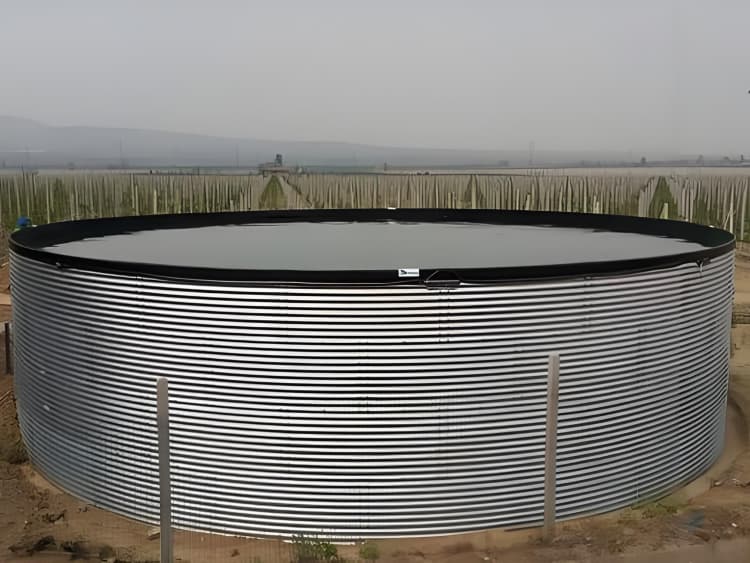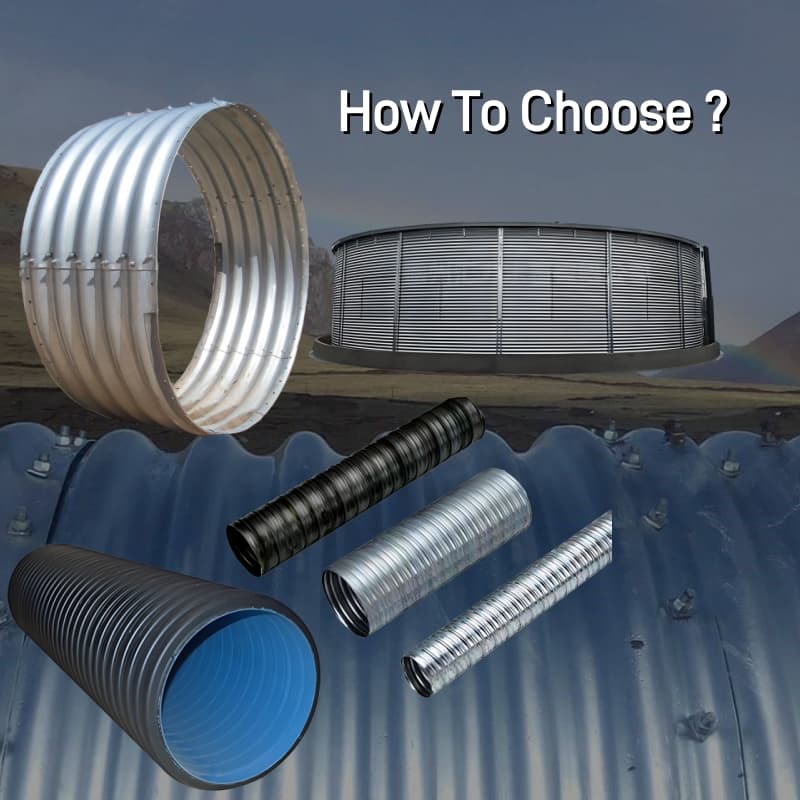Executive Summary
The global water storage market currently utilizes 2.7 million metric tons of steel annually, with galvanized corrugated steel (GCS) tanks holding 68% market share versus 22% for stainless steel (SS) alternatives (AWWA 2024). This technical analysis compares both systems across six critical parameters, incorporating ASTM standards and field performance data from coastal, arid, and industrial environments.
1. Material Properties Comparison
Mechanical Characteristics
PropertyGCS (ASTM A653)SS 304L (ASTM A240)Yield Strength (MPa)345205Elongation (%)2240Hardness (HV)150210
Key observation: The corrugation design enhances GCS structural stability despite lower base material strength, achieving 1.5× higher buckling resistance per unit weight (ASCE 7-22).
2. Corrosion Protection Mechanisms
Galvanized Systems
- Cathodic protection: Zinc coating (3.9 oz/ft² per ASTM A123) sacrifices at 25μm/year in pH 6.5-9.0 water
- Self-healing: Zinc carbonates formation repairs minor scratches
Stainless Systems
- Passive layer: Chromium oxide (Cr₂O₃) film regenerates with oxygen exposure
- Pitting resistance: 316L grade shows 10× better chloride resistance than 304 (ASTM G48)
Field data: In Florida’s marine environment (C5 corrosion zone), GCS requires re-coating after 15 years versus SS’s 40+ year lifespan.

3. Lifecycle Cost Analysis
20-Year Cost Projection (10,000-gallon tank)
Cost ComponentGCS ($)SS ($)Initial installation18,50032,000Annual maintenance1,200300Mid-life repair8,0000Total50,50038,000
Break-even point: SS becomes economical after year 9 in coastal regions (NACE IMPACT study 2023).
4. Environmental Performance
Climate Adaptation
- Arid zones: GCS shows superior UV resistance (5% gloss loss after 10,000 hours vs SS’s 12%)
- Coastal areas: SS 316L maintains <0.1mm/year corrosion rate at 500m from shoreline
Water Quality Impact
- Biofilm formation: SS surfaces exhibit 30% lower bacterial adhesion (NSF/ANSI 61)
- Metal leaching: GCS releases <0.1ppm zinc (EPA allowable: 5ppm) after 72-hour stagnation
5. Case Studies
Project 1: Municipal Water Tower (Houston, TX)
- System: 500,000-gallon GCS tank
- Performance: Required zinc spray repair at year 18; current condition index: 7.2/10
Project 2: Pharmaceutical Plant (Singapore)
- System: 316L SS storage with electropolished interior
- Performance: Zero maintenance over 12 years; microbial counts consistently <10 CFU/ml
Selection Guidelines
- Choose GCS when:
- Budget constraints exist
- Non-aggressive water chemistry (Langelier Index > -0.5)
- Accessibility for maintenance
- Specify SS when:
- Critical hygiene requirements (e.g., healthcare)
- High chloride/sulfide environments
- 30-year design life
Emerging solutions: Hybrid systems with SS upper sections and GCS bases show 22% cost savings in earthquake-prone areas (ASCE/SEI 41-23).
